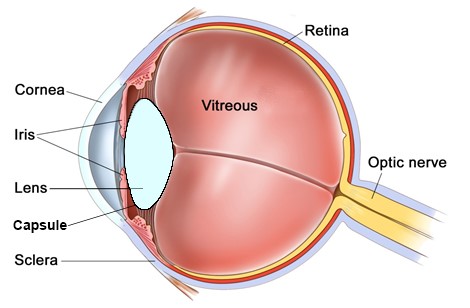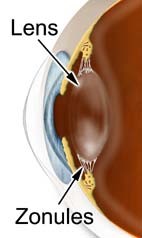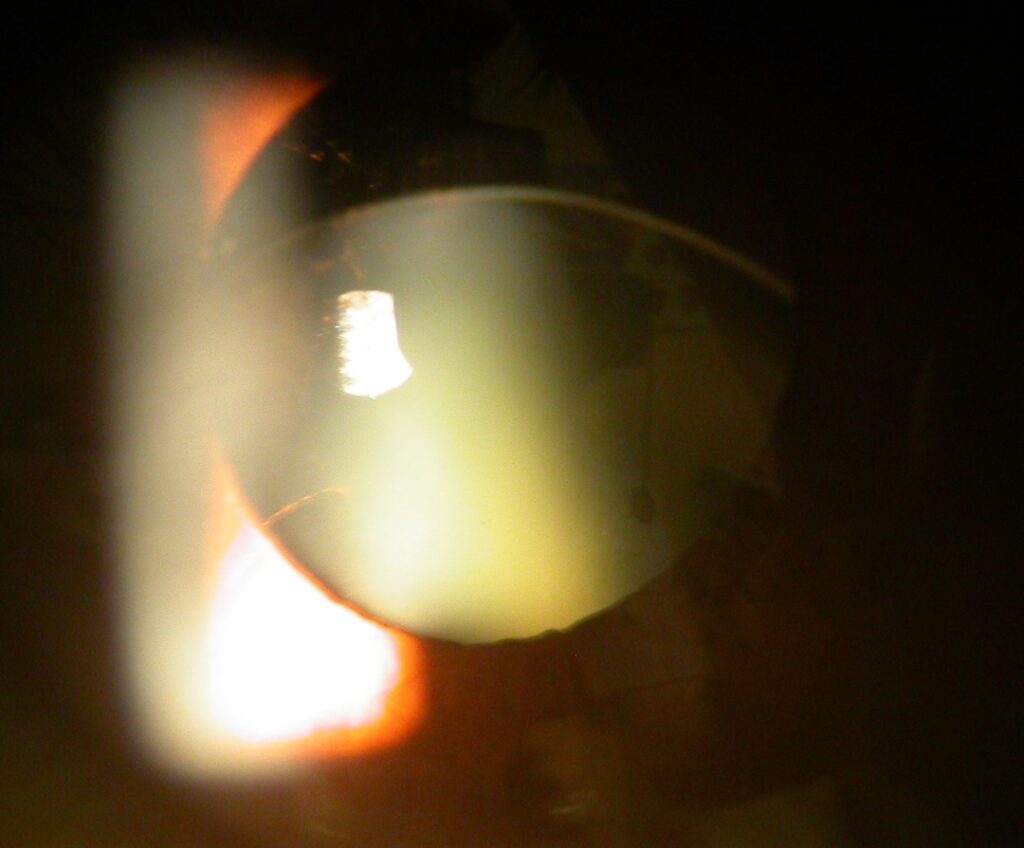- What are cataracts?
What are cataracts?

Just as there is a risk of accidental injury with poor sight, there is a risk associated with surgery. For this reason, eye care professionals often talk about cataracts needing to ‘ripen’. This simply means that if the cataract is not causing any visual symptoms then it is not worth any risk to treat them. In contrast, if the cataract is sufficiently noticeable to affect day to day life, then surgery may be worth a small risk to improve the vision.
The risk of cataract surgery is very low. Large national surveys tell us that 95% of patients have improved vision after cataract surgery, 2.5% do not notice an improvement, and 2.5% can be slightly worse. One person in one thousand can be blinded by surgery.
What does cataract surgery involve?
Will I need glasses afterwards?
The aim of cataract surgery to improve vision and reduce dependence on glasses. When the cloudy cataractous lens is removed it is replaced with a clear plastic lens. This is called an intraocular implant, or intraocular lens (IOL). The IOL required to correct your vision is determined from measurements taken pre-operatively. Thus, most people will not need glasses for distance vision after surgery, but a minor prescription can often eek out extra sharpness from the eye.
The ability to read after cataract surgery is dependent on the type of lens implant (IOL) that is inserted in your eye at the time of surgery. Standard monofocal implants, the only implants available on the NHS, provide quality distance vision only. Reading or intermediate glasses will always be required for near tasks.
Premium implants, such as presbyopic or toric implants are only available to private patients. Presbyopic implants, also known as multifocal implants, can give you clear vision for distance and reading. Presbyopic implants are not necessarily better than the standard monofocal lenses, but offer less dependence on glasses for close work. Both types of lenses have pros and cons. The monofocal implants gives the sharpest vision with the least side-effects. Presbyopic implants give a good range to the focus but sacrifice very slightly some sharpness and contrast, and can sometimes cause some ghosting or glare under certain lighting conditions. For this reason people talk of multifocal lenses requiring a period of neural adaptation, whereby your brain gets used to these nuances, until your vision is accepted as “normal” for you. This may take some months. 1 in 100 people never adapt to these lenses and the lenses have to be removed and replaced with monofocal lenses. Additionally, whilst 70% of the time you will not require reading glasses, 30% of the time reading glasses may still be helpful or required, especially for small print or reading with poor lighting.
Toric IOLs correct astigmatism. Astigmatism is the irregular curvature of the eye, where the eye is rugby ball shaped rather than football shaped. Astigmatism therefore causes blurred and distorted vision. Astigmatism is usually corrected with glasses or contact lenses. When you have cataract surgery you have a golden opportunity to correct this astigmatism with a toric IOL, thereby reducing your dependence on glasses after surgery. Toric IOLs can be monofocal or multifocal in design.
The type of lens implant that you should have depends on your visual requirements, eye measurements, and your expectations from surgery. You should discuss this with your ophthalmologist.

How long will the implant last?
Complicated Cataract (weak zonules, dislocated lens)
The natural lens of the eye is contained within an elastic ‘capsular bag’. This bag is suspended within the eye by a series of ‘guy ropes’ around the outside of the lens called zonules. This is rather like a trampoline being suspended by springs all around its edge, holding the trampoline taut and central.
High magnification view through an iris showing the curcular pupil, with a decentered / dislocated cataractous lens. This is due to weak zonules.
Similarly, 2% of all cataract operations have a complication known as ‘posterior capsule rupture’. This is where the capsular bag that holds the lens in position splits during surgery, allowing the cataract or lens to potentially fall into the vitreous gel of the eye, or allowing the gel to come forward. Again, this can only be repaired by a retinal surgeon with a vitrectomy procedure.

